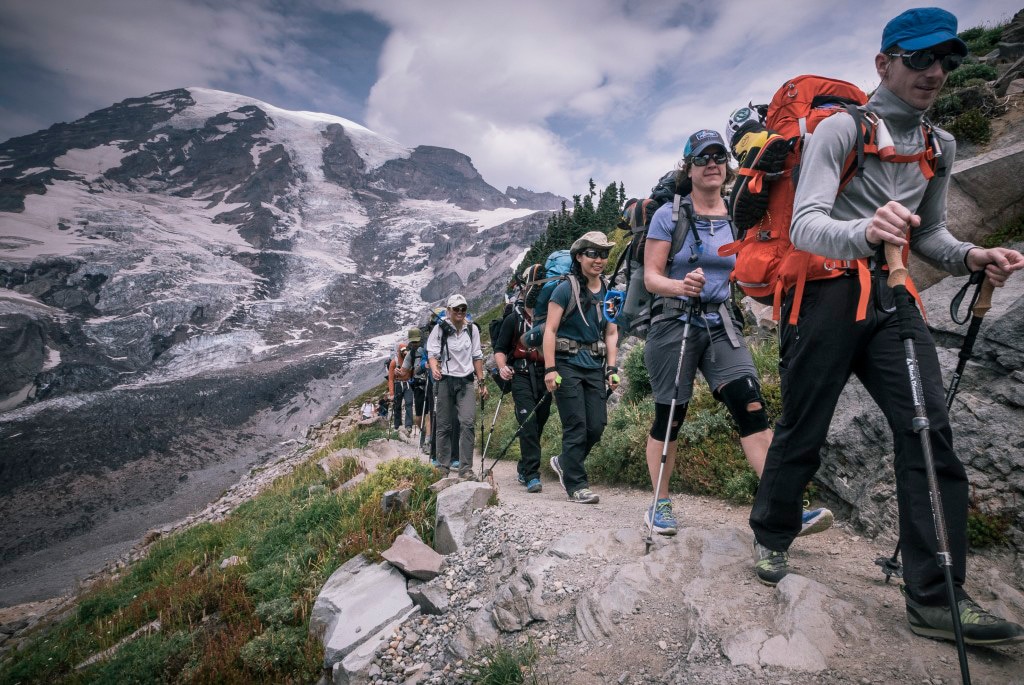Last summer, 21-year-old Maddie Miller cinched the state highpointing speed record. Here, she reveals her favorites among the nation’s highest peaks.
Every state has a highest point (duh), which means there’s a summit in your backyard, no matter where you live.
Last summer, 21-year-old Maddie Miller partnered with guide, mountaineer, Everest record-holder, and friend Melissa Arnot, to tick the tallest hills, peaks, and swells in every state and, with luck, set a speed record.
The two first met in 2013 for a climb Arnot was guiding on Mount Rainier. They became quick friends and hatched the idea of a highpointing record while climbing Idaho’s Borah Peak. After over a year of logistical planning, sponsorship talks, and training, Miller boarded a plane for Alaska.
The clock started on June 27, when Miller reached the summit of Denali. 41 days, 16 hours, and 10 minutes later, she and Arnot hit stop on Mauna Kea, Hawaii, beating the previous record by more than a day.
After standing on the top of every state and taking time to reflect, Miller can confidently say these are her favorites.
Granite Peak, Montana – 12,799 feet
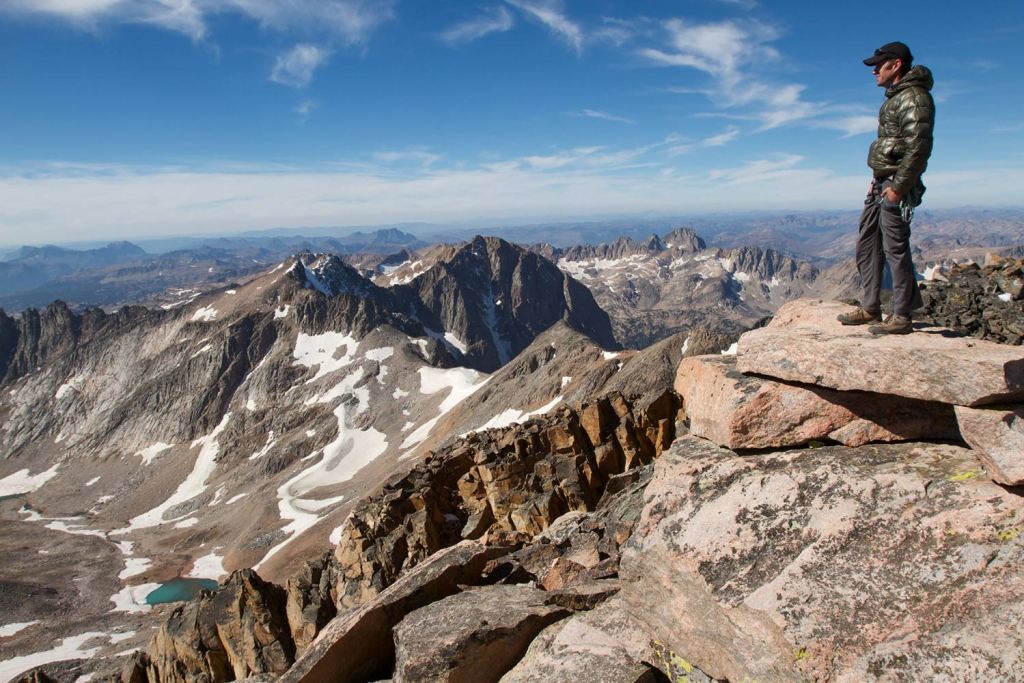
The summit of Granite Peak | Photo: Bryan Gartland
Both Miller and Arnot were quick to name Granite Peak as their favorite. Reaching the summit requires a burly 40-mile round-trip haul, but when every mile has something new to offer, you barely notice the distance. “It’s rewarding the entire time. With every landmark we got to, we were blown away by the alpine beauty and solitude of the Beartooth Mountains,” said Miller.
The team passed clear mountain streams, waterfalls, and alpine lakes fringed with conifers to get to the base of their objective: the Standard Route (technical climbing required). They launched up through the treeline into Granite’s famously sketchy fourth and low fifth-class terrain, gaining the South Face to the summit via the mountain’s east ridge. The reward? 360 degrees of jagged horizon as far as Gallatin Range, Lone Mountain, and even Yellowstone National Park.
Mount Marcy, New York – 5,344 feet
The crown of the Adirondacks, Mount Marcy, is an eastern gem green with bottlebrush forest and often haloed in low clouds.
“After being out west, it was cool to come here and see the contrast between the two halves of our nation,” Miller said, recalling the lush greenery. She and Arnot took the standard approach, a popular 7.5-mile trek (one way) with a scramble to the top.
Summit parties can count each of the 46 mountains in the High Peaks region, and clear weather casts views as far north as Montreal.
Black Elk Peak, South Dakota – 7,242 feet
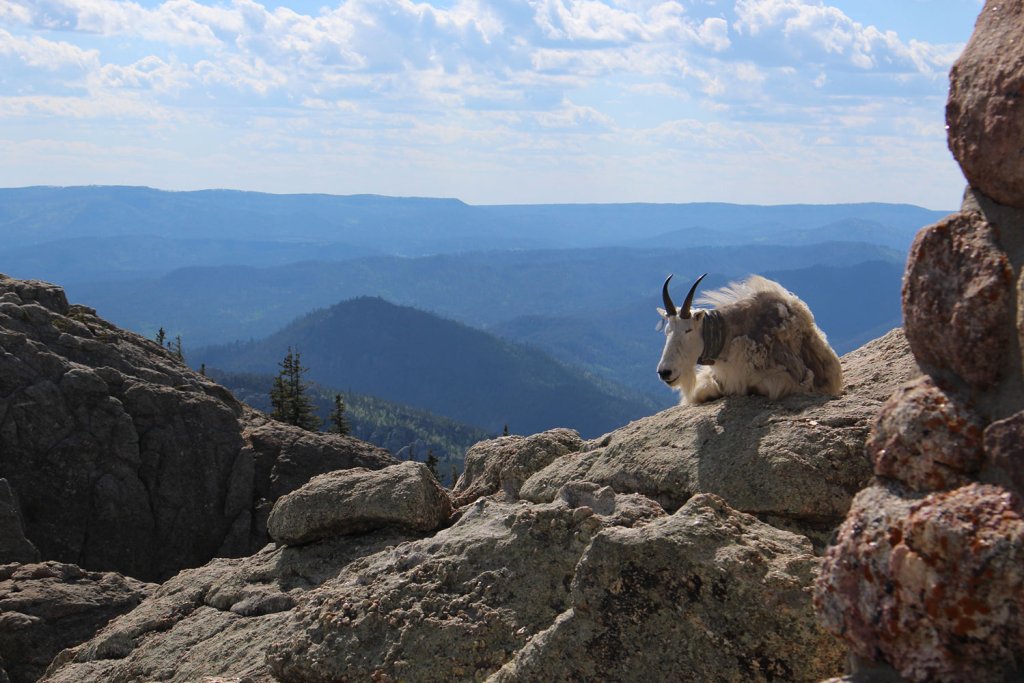
View from the summit fire tower | Photo: Ken Oliver
South Dakota’s Black Hills may be home to Mount Rushmore, but Miller and Arnot had a different storied mount in their sights, one just four miles west. Once named Harney Peak for a 19th-century Sioux-massacring U.S. Army general, the mountain was renamed Black Elk Peak after a Lakota leader, just four days after Miller completed her 50 Peaks Challenge. It’s no wonder the Sioux considered it a sacred site: It’s world’s highest point between our Rocky Mountains and Spain’s Pyrenees. The trail winds through moss-carpeted pine forests and rocky outcrops prowled by mountain lions and bighorn sheep.
“There’s also a really cool castle on the top that brought me back to my imagination days,” Miller said. It’s a stone fire tower built in the 1930s, offering views of the surrounding Black Hills National Forest. At its feet lie offerings from native Sioux, whose ancient ceremonies still bring them to the mountain.
Mount Whitney, California – 14,494 feet
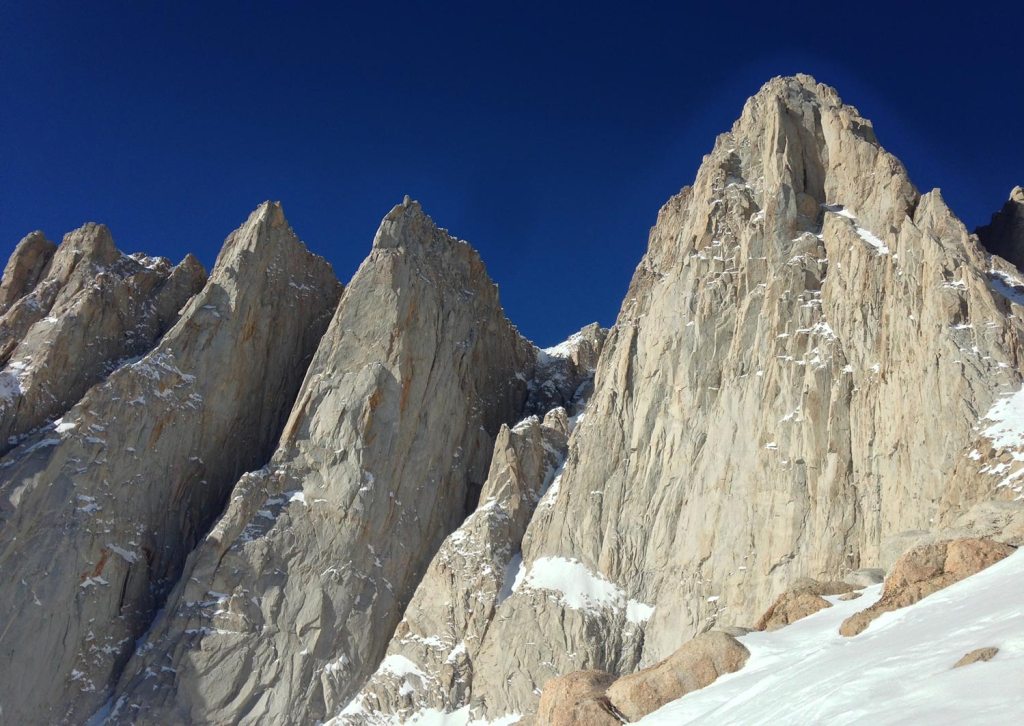
Mount Whitney from Iceberg Lake | Photo: Daniel Birdwell
As the highest point in the Lower 48, “Whitney definitely requires some altitude training and acclimatization,” Miller said. She and Arnot took the Mountaineer’s Route, which can vary from a low-angle ice climb to a “scorching scree-slog,” according to the Mountain Project route page. The team experienced more of the latter, tackling boulders and snow-striped gullies up to an exposed third-class traverse to the summit. They descended via the standard route, the 11-mile footpath arcing past glassy Mirror Lake to the Pacific Crest Trail.
Guadalupe Peak, Texas – 8,749 feet

Hiking toward Guadalupe Peak | Photo: William Carr
Guadalupe Peak is a study in contrasts. “You get this barren desert below and a beautiful, vibrant forest above,” explained Miller. “There are points where you cut into the rock and then wander back into the trees.” Over 8.5 miles round-trip with 3,000 feet of gain, the trail crosses a gradient of ecosystems, topping out in a sky island of white and pinion pine. The granite prow of a nearby formation, a lesser-known El Capitan, catches the morning sun as the trail switchbacks up to the summit. There, backpackers can take advantage of the primitive campsite nestled between the trees.
King’s Peak, Utah – 13,528 feet
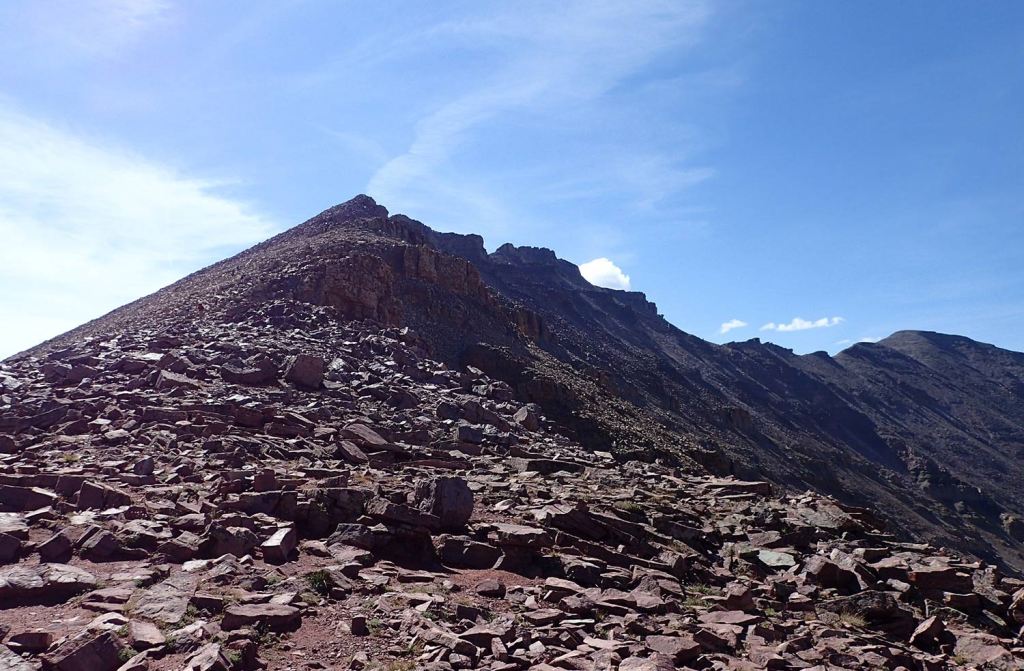
The ridge to Kings Peak as seen from Anderson Pass | Photo: QuinTCM TCM
With more than 5,000 feet of prominence, Kings Peak reigns over Utah’s High Uintas. “It’s close to Salt Lake City, so people can have this awesome mountain experience very close to home,” Miller said. The mountain is red-gold stone, striped, and stratified like freshly cut cedar. To gain the summit, start at Henry’s Fork Trailhead and follow the trail through a wildlife-rich basin where Miller spotted moose during her trek. Continue several miles up a mellow grade to Anderson Pass before rocketing up the north ridge to the summit.
Mount Katahdin, Maine – 5,268 feet
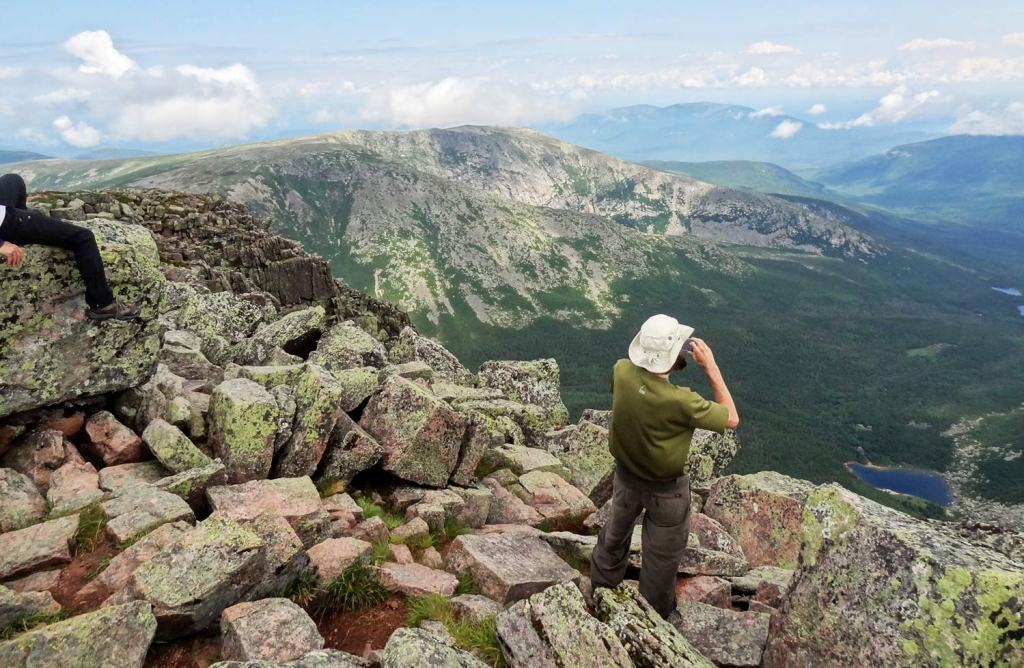
View from the summit of Katahdin | Photo by Taylor Radigan
Miller and Arnot weren’t the only endurance freaks to summit Katahdin on July 13. As the northern terminus of the Appalachian Trail, Mount Katahdin also hosts the celebrations of triumphant thru-hikers inbound from Springer Mountain, Georgia. Miller, who had never been to Maine, said the rugged granite north-country views were almost alpine compared to the Atlantic Coast she pictured when thinking of Maine.
“There were lobsters, of course, but also really awesome mountains. I didn’t expect to find both those things in the same state,” she said.
For a scenic route, take the 5.2-mile Hunt Trail (a section of the Appalachian Trail) past waterfalls and lichen-speckled boulders, gaining over 4,000 feet to the summit.
Cheaha Mountain, Alabama – 2,407 feet
Verdant Cheaha Mountain was the third highpoint on Miller and Arnot’s list and remains one of their favorites. “We really loved Alabama,” Miller said. “The area surrounding Cheaha was beautiful, and the people were extremely hospitable,” she said. After hiking a little over two miles to reach the summit, climb the stone observation tower to get the most of the sprawling Talladega Mountain views. On your descent, be sure to take the short side trail to proudly jutting Pulpit Rock for a Lion King-style photo op.
Hawkeye Point, Iowa – 1,670 feet
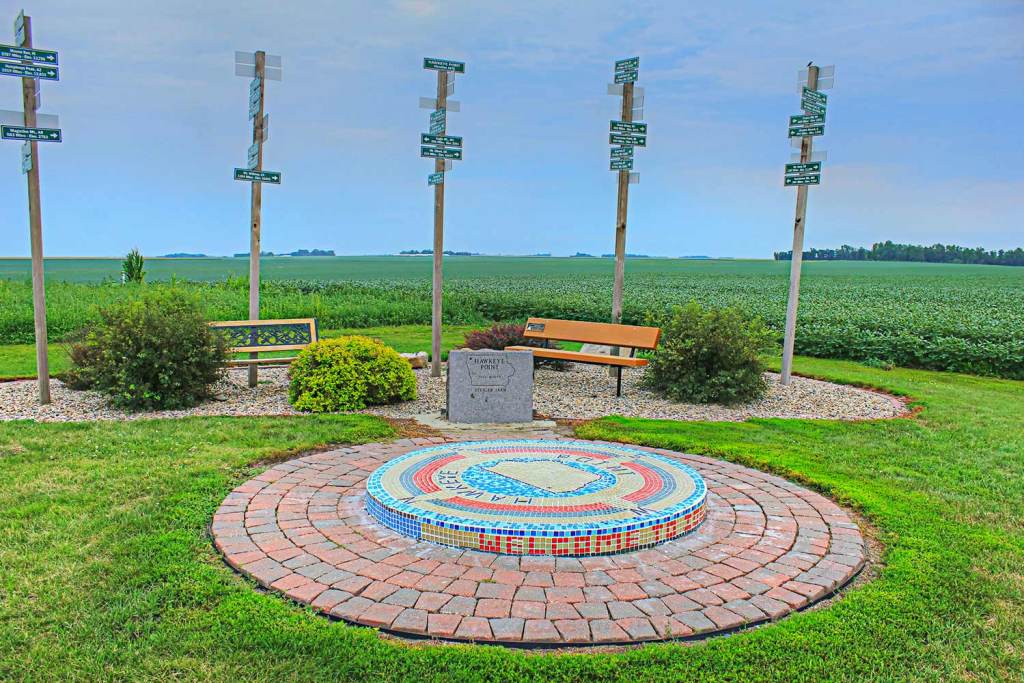
Hawkeye Point near Sibley, Iowa
As one might expect, Iowa’s highpoint resides in the middle of a cornfield, and that’s exactly why it was so endearing. Especially touching for Maddie was the highpointer’s tribute displayed on the summit: license plates from every state pointing in the direction of their respective highpoints. A working farm until 2008, Hawkeye Point is now a state-owned park. Gain the grassy summit from parking, just a few feet away, to pay homage to highpoints everywhere. True speak: This little journey won’t satisfy your hiking jones. Check out more Iowa trails here.
Mount Rainier – 14,411 feet
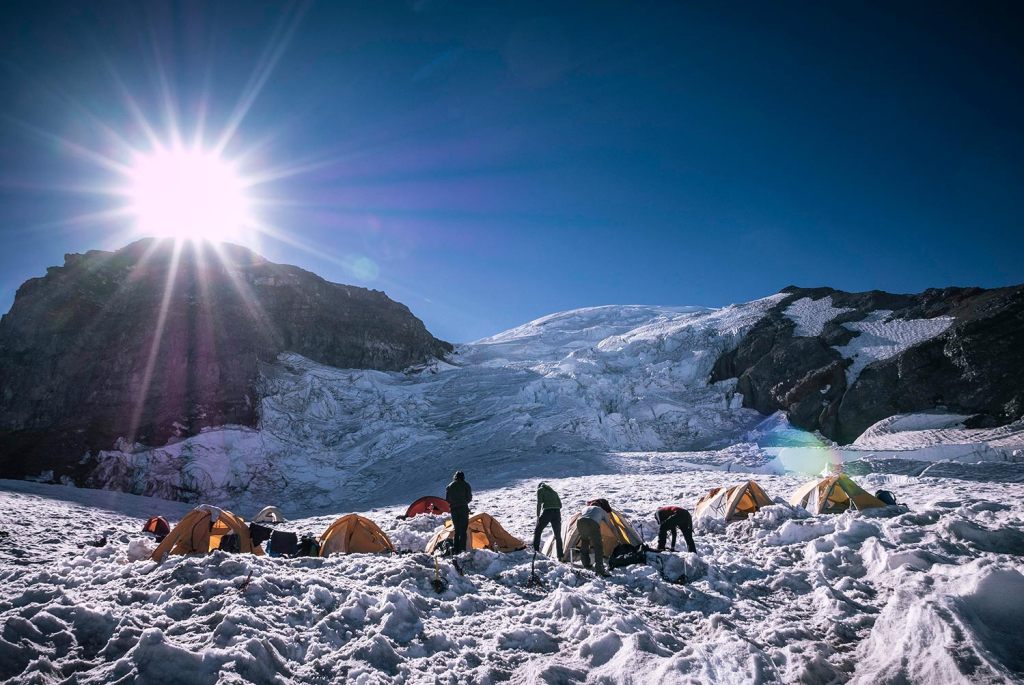
Camp on the Ingraham Glacier | Photo by Kevin Fujii
An active volcano home to 27 glaciers, Rainier is not to be taken lightly. Most first-time climbers follow a guide (like Arnot, who has summited Rainier 108 times) 6.5 miles and 9,000 vertical feet to the top along the Disappointment Cleaver Route, where crevasses are generally well-marked and avalanche danger is low. Returning as equals to the place where they had first met as a student and mentor was a defining moment of the trip for Miller and Arnot. “You don’t realize how much you’ve improved until you go back to the place where you started,” said Miller. Not into mountaineering? Try the Wonderland Trail instead. This 84-mile route circumnavigates the mountain, one of the most captivating in the Lower 48.
